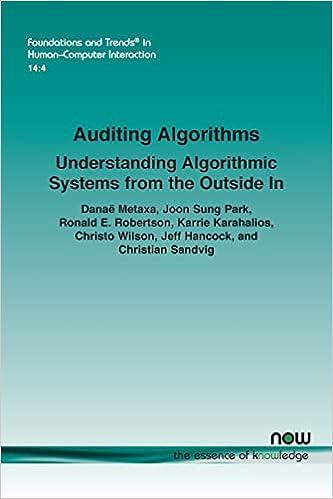Question
Managers use CVP concepts to perform sensitivity analysis. Sensitivity analysis is a what-if technique that asks what will happen to a company's breakeven or target
Managers use CVP concepts to perform sensitivity analysis. Sensitivity analysis is a "what-if" technique that asks what will happen to a company's breakeven or target profit if sales price, costs, or sales mix change. The same CVP formulas that are used to perform CVP analysis for a company with a single product can be used for a company with multiple products. However, these formulas will use a weighted-average contribution margin of all products. So, each unit's contribution margin is weighted by the relative number of units sold. Companies that offer many products, however, don't want to know the breakeven point in terms of units. Rather, they focus on the breakeven (or target profit volumes) in terms of sales revenue. Therefore, they need to know the weighted-average contribution margin ratio.
Regular pricing decisions are made by considering target profit, determining how much customers will pay, and deciding if the company is a price-taker or a price-setter. Price-takers do not have much control in setting their prices and use a pricing approach known as target costing. Price-setters do not have to worry about the competitor's price so they can set prices by adding their desired profit to the cost to produce that product. Price-setters use a pricing approach known as cost-plus pricing.
Special orders generally refer to a one-time order for a large volume of product at a reduced sales price. When making special order decisions, companies should consider if excess capacity is available, if the reduced sales price is high enough to cover incremental costs of filling the special order, and if accepting the special order will affect regular sales in the long run.
When making this decision, companies should consider if the product provides a positive contribution margin, if any fixed costs will be avoided if the product is discontinued, if discontinuing the product will affect sales of other produces, and what can be done with any freed-up capacity. If the lost revenues exceed the cost savings from discontinuing the product, the product should not be discontinued. However, if the total cost savings exceed the lost revenue from discontinuing the product, the product should be discontinued.
Our Discussion Questions are:
Scenario: 1. Lauren had been a manager of a major hotel chain for 15 years. Due to a hotel owner's illness, Lauren was offered the opportunity to purchase a hotel near a vacation area she had often visited. After obtaining a lawyer and an accountant to assist her, Lauren did an analysis of the business and evaluated several contingencies relating to various scenarios that might occur based on economic and weather season circumstances. Since the expected monetary value of the various scenarios was much higher than the price of the hotel, she decided to purchase the hotel. She resigned her position, obtained a loan, and purchased the hotel. The following year, there was a severe economic downturn and also a very bad weather season that reduced the number of guests and also caused a resulting mold situation in the hotel building that required expensive repair work. Lauren ran short of cash, became emotionally distraught, and eventually had to sell the hotel at a significant loss. Question: Was it a bad decision for her to purchase the hotel instead of keeping her other managerial position? Explain.
Scenario: 2. Pennsylvania Valve Company makes three types of valves: Speedy Flow, Sure Flow, and Fine Flow. Each of the three products has a different contribution margin, and the proportions of the three products sold have remained steady over the years. Question: How could Pennsylvania valve compute a breakeven point given this situation?
3. How can conflicts arise between the decision model and the performance evaluation model used to evaluate managers? Provide an example of this type of conflict.
Step by Step Solution
There are 3 Steps involved in it
Step: 1

Get Instant Access to Expert-Tailored Solutions
See step-by-step solutions with expert insights and AI powered tools for academic success
Step: 2

Step: 3

Ace Your Homework with AI
Get the answers you need in no time with our AI-driven, step-by-step assistance
Get Started


